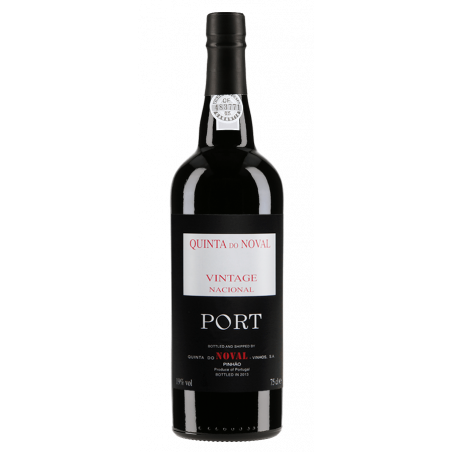- Pays:
- Portugal
- Région:
- Vallée du Douro
- Appellation précise:
- Porto
- Millésime:
- 2019
- Couleur:
- Rouge
- Type de vin:
- Fortifié
- Format:
- Bouteille de 75cl
- Cépage(s):
- Touriga Nacional, Touriga Franca, Tinto Cão, Sousão, Tinta Roriz
- Âge des vignes:
- Vieilles vignes
- Vinification:
- Foulage au pied pour obtenir le moût puis macération en lagares
- Elevage:
- Durant 18 mois en foudre de 25hl
- Sucres résiduels:
- 100 g/dm3
- Boire à partir de :
- 2029
- Apogée :
- 2032-2042
- Boire avant :
- Difficile de le dire...
- Conseil de service :
- Décanter, une fois ouvert à consommer dans les 2 jours
- Servir à :
- 15-17°C
Description
Quinta Do Noval est surement l’une des Quinta des plus racées du Douro. Elle a été cédée par les Van Zeller au groupe Axa en 1993 (Pichon Longueville Baron à Pauillac, Petit Village à Pomerol, Suduiraut à Sauternes, Arlot à Vosne et Nuits-Saint-Georges, Disznoko à Tokaj…). Implantée à Pinhão, c’est la cuvée “Nacional” qui a fait la réputation de la maison ! Elle est issue d’une parcelle de vignes en franc de pied à partir de Touriga Franca, Tinto Cão, Touriga Nacional, Sousão et Tinta Roriz. 18 mois d’élevage en foudre de 2500 litres.
Quel grand Porto ! On retrouve l’identité de la maison Do Noval avec une race supplémentaire qui caractérise la cuvée emblématique “Nacional”, produite uniquement dans les plus grands millésimes. Le nez évoque la cerise kirschée, le cacao frais, la badiane, la confiture de myrtille, le tout enveloppé dans un écrin subtilement fumé. En bouche, “Nacional 19” est une vraie bombe. Attaque puissante, l’équilibre de la liqueur atteint des sommets de perfection. À encaver au moins 5 ans, potentiel d’au moins 100 ans...
Suggestion gourmande
Canon de biche laquée au porto, pommes grenailles aux épices méditerranéennes.

